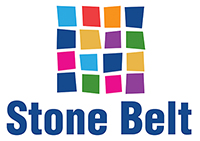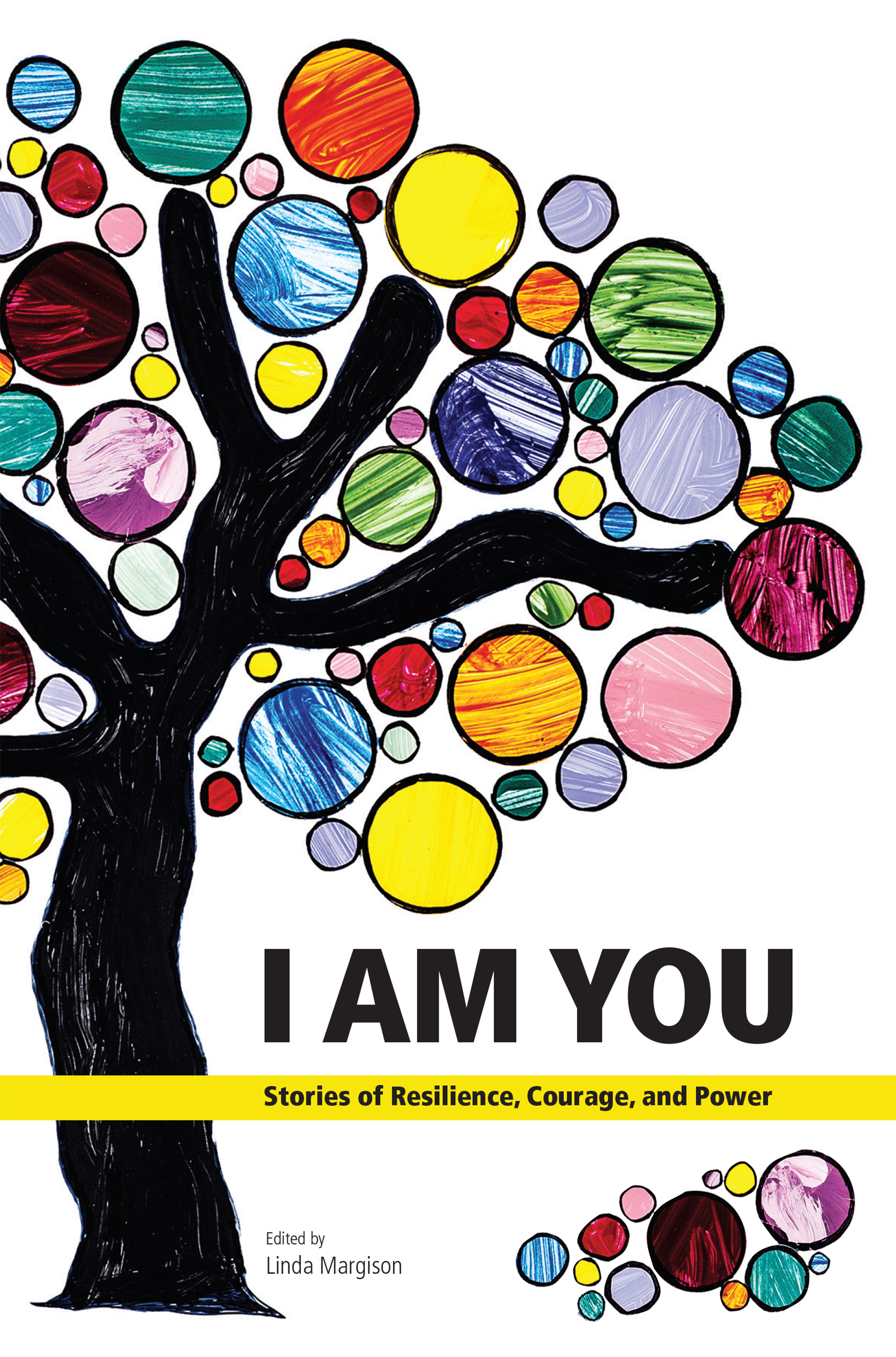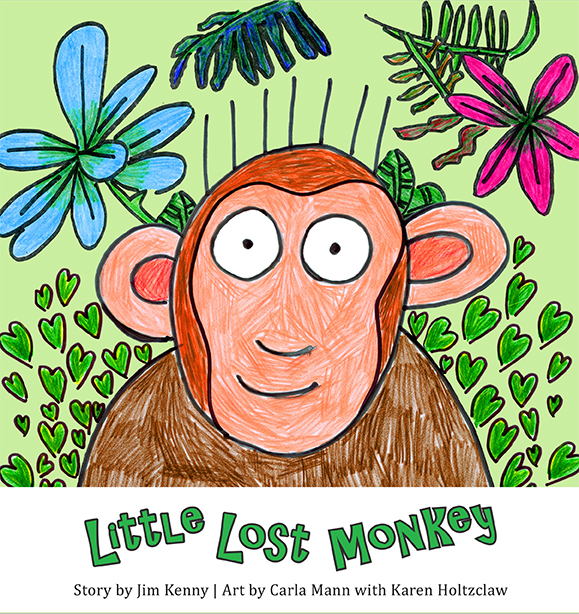(812) 332-2168 | 2815 East Tenth Street, Bloomington, IN 47408
SP Page Builder
Chapter Six
Each person has unique capacities, gifts and talents. It is the aim of our services to further develop these assets in each person served and employed. We strive to provide opportunities for self-advancement as well as to enhance each person’s capacities to contribute to the greater good of the community.
The societal changes that have empowered people with disabilities to be fully included in the community have naturally led to opportunities for valued social roles. Sometimes people with disabilities have been on the receiving end of give and take without having many opportunities to give. That is one reason why their contributions can be so important to them—and to others. Those contributions help people with disabilities demonstrate the value of their role in society as a whole, and they help provide meaning to their individual relationships. It helps them establish a "stake" in what is going on around them.
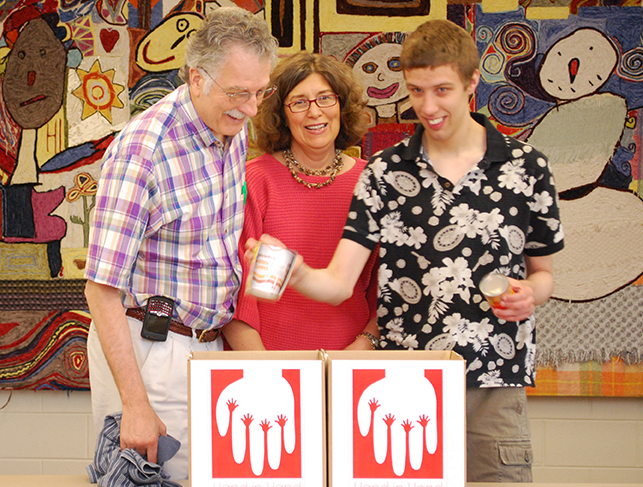
Recruiting their neighbors to leave food donations on their doorsteps on designated days, the Hosslers helped arrange for Jonathan to go by those houses with staff assistance to collect the donations and take them to the Community Kitchen. This worked! Jonathan had something meaningful to do and the route participants could more easily contribute to alleviating hunger in their community.
More than 10 years later, the program continues, but now about 10 individuals help collect the food from over 100 households. Hand in Hand regularly contributes 14 to 17 percent of all the Community Kitchen’s food products. There is great camaraderie and enduring friendships between the Hand in Hand volunteers and the staff of the Community Kitchen. This creative collaboration demonstrates how someone with significant disabilities can contribute mightily to the community—beyond what its creators could have imagined.
Before starting in the Pre-Employment Transition Services (Pre-ETS) program, John Smith had never had a job before. He was an accomplished swimmer and had considered a lifeguarding position. Pre-ETS gave him the support to independently seek out two different lifeguarding positions; one with Parks and Rec and one with the YMCA. He was able to realize that keeping both was too hard on his academics and to recognize a preference for the YMCA. He’s now paying his way through a mechanical engineering degree at Ivy Tech with the money he makes at the YMCA. He’s good at lifeguarding and loves it, but it’s also fueling his ability to pursue his dreams. John has become a valuable employee as a lifeguard, which is quite a skill, but has his eyes set on an even higher ambition. His skills will be in high demand once he completes his training.
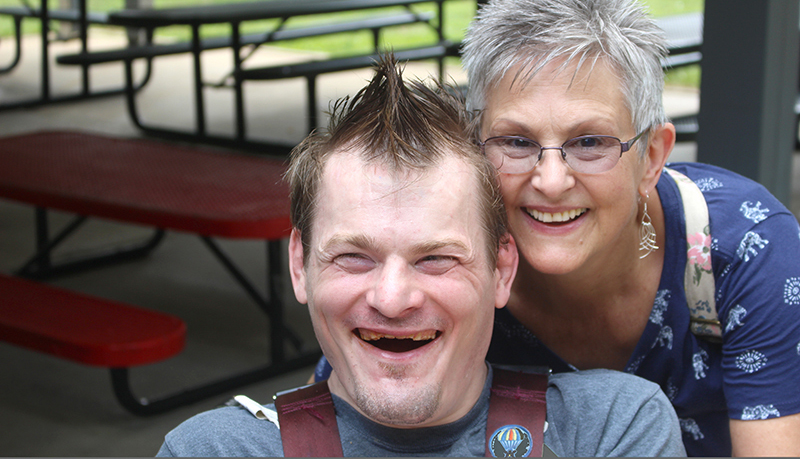
“I once was training a group of staff on the importance of Stone Belt’s Principles of Service and we came to this principle – ‘All people have contributions to make.’ I asked the trainees to think of someone we support and a particular contribution that person makes. One of the participants mentioned a young man named David Byrns that he supported. David has such effusive happiness and enthusiasm that he immediately ‘lights up a room’ wherever he goes. It was a wonderful answer. I was thinking more of skills and actions, but truly, what a great contribution David is making. To make others in his presence feel uplifted and happier because of his countenance. That’s something. If everyone could be like this—what a better world it would be. “
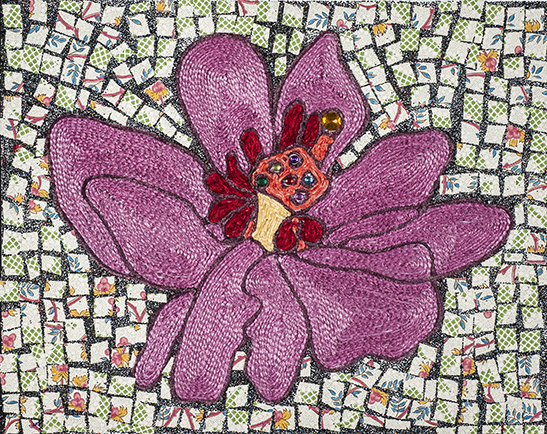
At that same time, Stone Belt received grant money and commissions to hire local collaborative artist Joe LaMantia to create large-scale pieces featuring studio artists’ designs. These installations at various city parks, the B-Line walking trail, and even the local public TV station, propelled the vibrant and often whimsical art out into the public eye. Of all the things that Stone Belt has done in the community, the efforts to sell art have created the most immediate and positive response from the public.
Studios have been developed in our Bedford and Columbus locations as well, each with their own unique styles and media. Some artists, such as Carolyn Abbitt, Haley Franklin, and Tasia Tanier-Gesner are so talented and prolific they have a following of collectors. Altogether, more than 75 artists have sold art through the program. The release of our annual art calendar is anticipated by many as a way to get one’s hands on Stone Belt art. The beautification of the community, the joy the artwork produces and public awareness are a couple of the contributions made by the talented artists in the Stone Belt Art Studio.

Julia Adams: With a Smile and a Song
By CATHERINE GRAY
from I Am You: Stories of Resilience, Courage, and Power
Julia Adams loves to sing—by herself and with other people. Whether it’s a pop song or country tune, if Julia knows the words, she loves to sing it. If pressed to come up with one favorite song, she might say Katy Perry’s “Fireworks.” But that’s just one song on a long list that she loves, each with a strong beat that really gets you going.
Julia is a 24-year-old native of Bloomington, Indiana, who attended Edgewood schools. Growing up, Julia says there was always a lot of fun and laughter around. High school was sometimes easy—and sometimes really hard.
For anyone witnessing Julia’s big smile, it’s no surprise to learn she had a lot of friends in high school. They’d do typical high-schooler things: “We walked around the halls together. We talked during the passing periods—that was fun,” she says. “We went to class together. We talked to each other during class. We told jokes during lunchtime.” She loves to tell jokes and laugh at ones she hears.
When Julia thinks of her high school years, she feels positive about her experience and doesn’t recall anyone being mean to her. She remembers those times being opportunities for her to stand up for herself in other ways. On the first few days, she didn’t know where to find her classes, especially through the crowded hallways, so she asked her teachers and they helped her find her way.
Another of Julia’s favorite songs—“You Should Be Here” by Cole Swindell—reminds her of a friend who moved away. She loves listening to it and its message of missing someone and losing someone you love. She and her friend are now able to keep in touch via computer through email and social outlets.
After high school, Julia had some different choices to make. At first, she was just sitting at home most days, which neither she nor her parents thought was the best way for her to spend her time. Her parents wanted her to attend Stone Belt programs, and she agreed that it would be a good place for her to be.
Stone Belt offers Julia lots of activities she enjoys. She didn’t know anything about Growing Opportunities—a program where Stone Belt clients grow vegetables in a greenhouse and then outsource them to local restaurants and food pantries—but she enjoys it and experiences a lot of success working there.
Julia also enjoys the Moving Forward classroom and the many different activities they do. She gets to use the computer—which she loves—and she has several opportunities to write. She particularly enjoys the Wednesday morning writing circles facilitated by Women Writing for (a) Change, a Bloomington-based nonprofit organization that emphasizes writing as an important creative and spiritual practice. Julia is proud of the stories she writes with that group.
Family is really important to Julia. She, a brother, and a sister live at home with their parents. Her sister is a student at Indiana University, and her brother is an elementary school teacher. Another brother lives in Indianapolis, and she has had to adjust to him being gone. Julia especially gets along with her sister; sometimes they go out and get their nails done together.
Julia’s family has a poodle who barks a lot and can always hear the car when someone is coming home. He especially likes to get on Julia’s bed! They got their dog from a rescue shelter and named him Wilson, after Mr. Wilson in “Dennis the Menace.” He loves to cuddle and sleep with Julia’s mom and dad.
The family doesn’t travel much, but did once go to Disney World, which Julia really enjoyed. She also has attended summer camp for many years and she loves having the freedom of choosing what she does there. She especially loves to swim and be around the water.
Julia’s parents are some of her strongest supporters. Her mother works at People’s State Bank, and her father is a preacher in Ellettsville. Sometimes they push Julia to be more social, because she loves spending time alone using technology. Her dad says he will walk in her room and she will be using her phone, watching TV, and using her computer all at the same time.
Although she loves to watch YouTube videos and listen to music on her iPod, Julia knows being out of the house, around people, and making friends is valuable time spent, but she sometimes would just rather be home with her technology.
Julia shares some funny stories about things that have happened to her in the past. Apparently, Julia is a very picky eater and she really—really—dislikes pickles. One day when she was 4, she was eating at a fast food restaurant with her family and they ordered a cheeseburger for her, but forgot to say “without any pickles on it.” Julia started eating the cheeseburger and, all of a sudden, there was a pickle in her mouth! She spit it out in a napkin.
Julia also tells a story about being much younger and having a fear of the dark. One night, she heard a noise and convinced herself that a monster was in her closet. She got so scared, she went to wake her mom and dad. They asked why she was scared and she told them about the monster, so they went to check.
Her parents said they scared the monster away, so she went back to bed. She kept hearing the noise and thought maybe it was the thunderstorm outside, but she also worried it was coming from inside her closet. When she finally looked inside her closet, she saw the noise was only a toy, so she knew there weren’t any monsters in her closet. The toy had scared them all away!
An important aspect of Julia’s life is attending and being part of her church. Her family goes twice on Sundays, once in the morning and once in the evening, and again on Wednesday evenings. She’s proud of her father and that his sermons are aired on the radio, using the microphone in his office.
Julia doesn’t have a job right now, and when she thinks of getting one, she says it might be really boring if she had to do things she didn’t like. But when she and her parents meet with staff at Stone Belt, they ponder possibilities that both interest Julia and at which she excels.
Julia would like to be able to find a job where she could get paid to do something she really enjoys—finding information on the internet, and that might let her share her love of music and singing.
She loves to sing, and her audiences love her!


Carla Mann: Little Lost Monkey
By LINDA MARGISON
from I Am You: Stories of Resilience, Courage, and Power
Change came often to Ohio native Carla Mann when she was growing up.
“We moved around a lot as a family,” the shy 49-year-old says. “I think my dad had a hard time settling down. He wasn’t quite satisfied. But I tried not to let it bother me too much.”
Each new town meant a new school, until she finally stopped going. “I had a nervous breakdown and had to go to the hospital to help me with my mental issues,” she explains. “I was in and out of the hospital. I am doing a lot better than what I was, than I used to be.”
When she wasn’t in the hospital, Carla lived in group homes until she finally arrived where she is today, in the Supported Living Program at Stone Belt Arc in Bloomington, Indiana. Through this program, Carla lives independently in an apartment with one roommate and receives support from Stone Belt as she needs.
“Right now, where I’m living at with Stone Belt is about the best place I’ve ever been. They take good care of me,” she says. “I like this arrangement better. I get to do more things I like to do.”
Those activities include reading the classics, like “Gone with the Wind,” and listening to her massive CD collection that includes country and gospel music, as well as stars Mariah Carey, Amy Grant, and Jewell. “I like all kinds of music,” she says. She’d eventually like to lose weight, so she watches her diet and enjoys aerobics.
What has carried her through each stage in her life, though, is art.
A self-taught artist, Carla began making art when she was a child and is now a professional artist, having sold countless mixed-media art pieces and illustrated a children’s book.
“When I was little, I liked to draw people and art; Christmas stuff, like angels, hearts, stuff like that,” she says, explaining that art was a constant in her nomadic young life. “I enjoy art very much and I like to do crafts while listening to music.”
She also enjoys writing poetry. “I used to write poems a lot and I was pretty good. I want to get back into it,” she says, adding that someday she would like to create greeting cards with her art on the front and her poems inside.
While Carla is one of the highest selling artists in the Stone Belt Art Studio, she ramped up her exposure and received wide public acclaim when she won the opportunity to illustrate a children’s book.
In February 2016, Jim Kenny, a noted psychiatrist, author, and foster father, decided he wanted to publish his foster-to-adopt story about Chipper Wump, a young monkey who lost his parents and launched his own journey to find a new home.
While he had some misadventures with a snake, a tiger, and a crocodile along the way, Chipper finds a temporary home with his foster mom, Missus Lion, who cares and comforts him until he finds his new forever home with the Chimp family.
Because Jim was already a fan of Stone Belt art, he decided to commission a Stone Belt artist to illustrate the book. Thirteen Stone Belt clients competed for the honor, but when Jim reviewed Carla’s work, he saw Chipper Wump just as he imagined.
With the help of art instructor Karen Holtzclaw, Carla started work on the book and took about a year sketching, drawing, coloring, and finalizing the pictures depicting Chipper’s adventures. Despite the days and hours spent creating the art, she says, “It was a lot of hard work to get it all drawn, but I’m excited about it. He’s funny and cute.”
With a generous donation from Jim, Carla was competitively compensated for her work, as she became the first client to have work published by Stone Belt Press in its inaugural publication. “I never thought it would happen,” she says.
Since that time, Carla has been featured in magazine and newspaper articles, on websites, and at book-signing events.
“I’m kinda proud of myself for doing that,” she says, explaining that the publicity has been one of the more difficult aspects of illustrating the book. “I’m kind of quiet and shy. I’m not bold about talking to people.
“I’m glad I did it,” she adds. “I’m making a lot of money off that book. My family says I’m an artist.”
© 2017 Stone Belt. All Rights Reserved.
